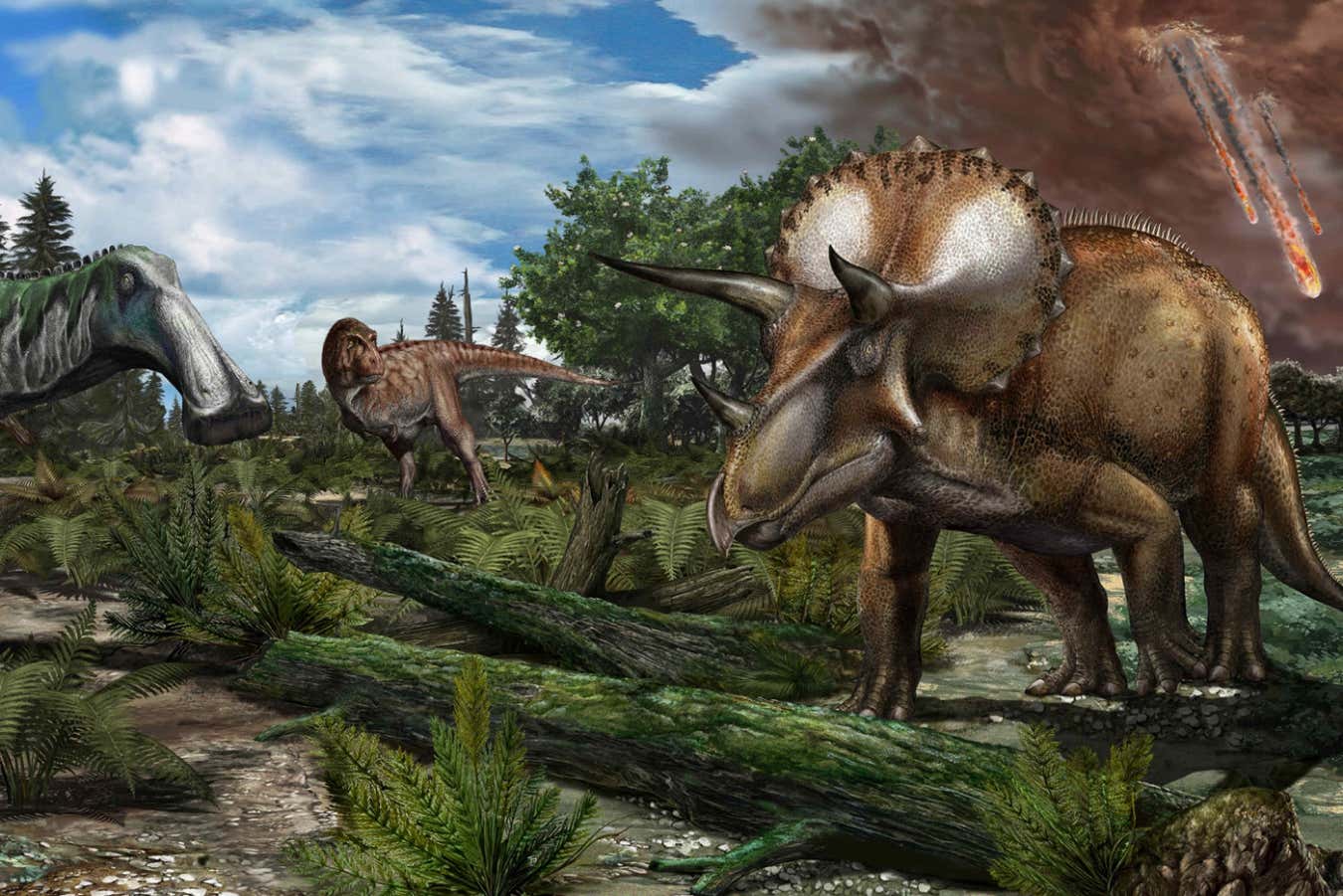The number of dinosaurs may have been stable before the asteroid impact, despite evidence that species were getting less diverse
By Sofia Quaglia
8 April 2025
Reconstruction of North America roughly 66 million years ago
Davide Bonadonna
Dinosaurs likely weren’t declining before an asteroid wiped them all out; instead, there may just be limited fossils from that time period, according to a new study.
It has been hotly debated whether dinosaur populations were thriving or dwindling when a huge asteroid slammed into the planet about 66 million years ago. Specifically, a drop in the availability of dinosaur fossils from the years leading up to the asteroid has led some scientists to believe the giants were doomed regardless of the impact.
Read more
Largest ever animal may have been Triassic ichthyosaur super-predator
Advertisement
Christopher Dean at University College London and his team analysed a dataset of more than 8000 fossils from four types of dinosaurs that lived between 84 million and 66 million years ago in North America, including the famed Tyrannosaurus rex and Triceratops. They found many fossils of dinosaurs from 84 million to 75 million years ago – and then that number drops in the following 9 million years leading up to the Chicxulub impact. But there was more.
When calculating how much land is currently accessible to palaeontologists from the years leading up to the asteroid’s impact and how many excavation expeditions have been undertaken in those areas, Dean’s team found there simply aren’t many of the right rocks available for today’s scientists to study.
Because palaeontologists look for fossils in ancient layers of Earth’s crust that have since been exposed to the surface, it is like working on “a puzzle where half the pieces are missing,” says Dean.
